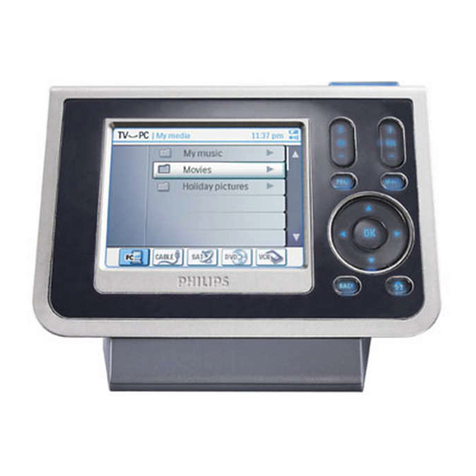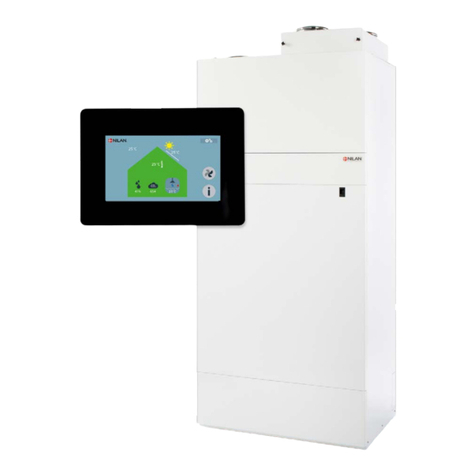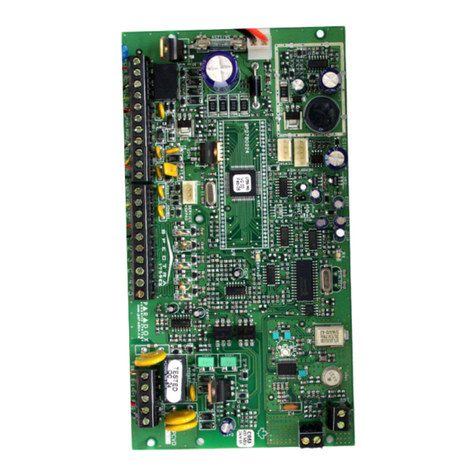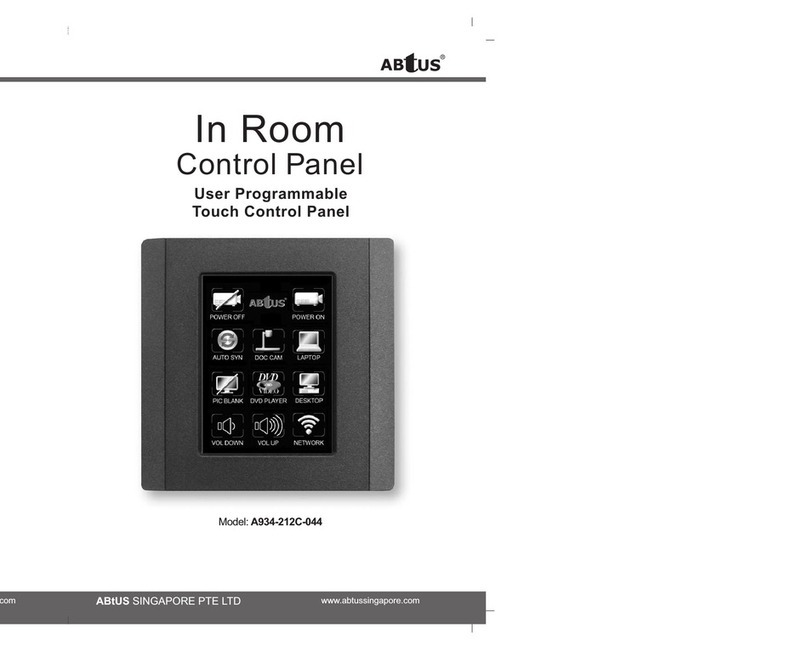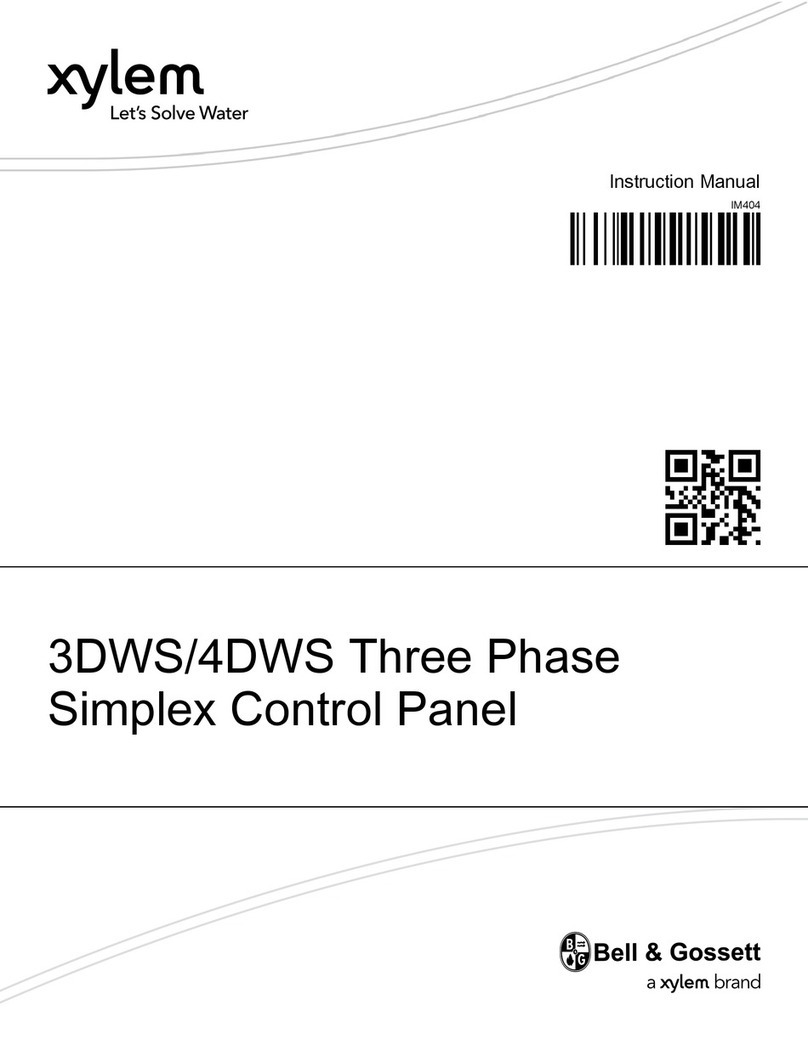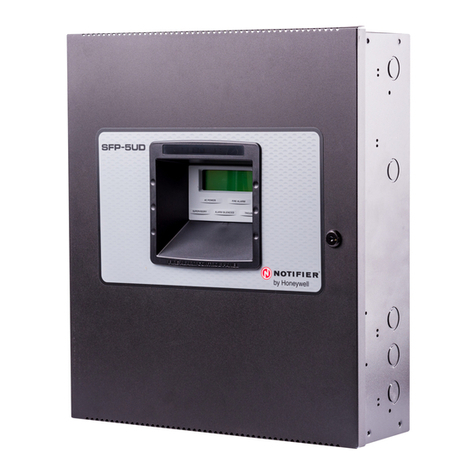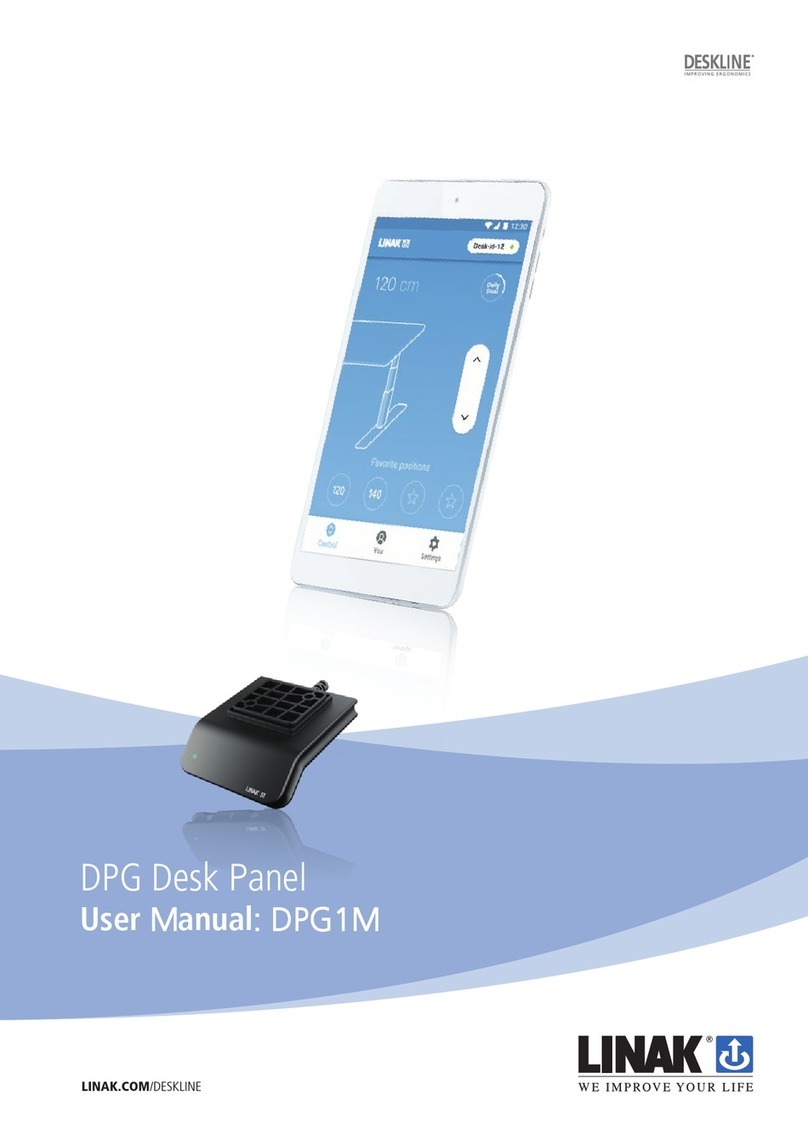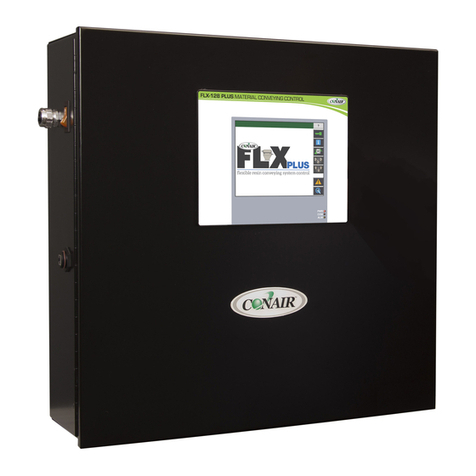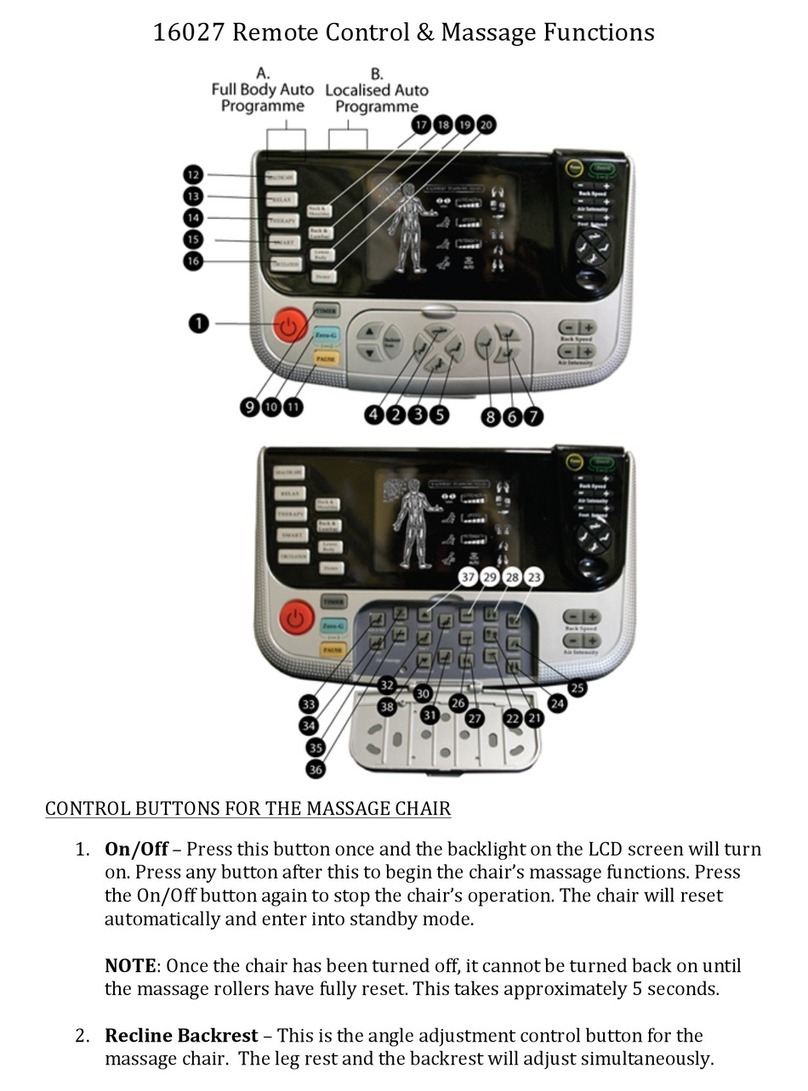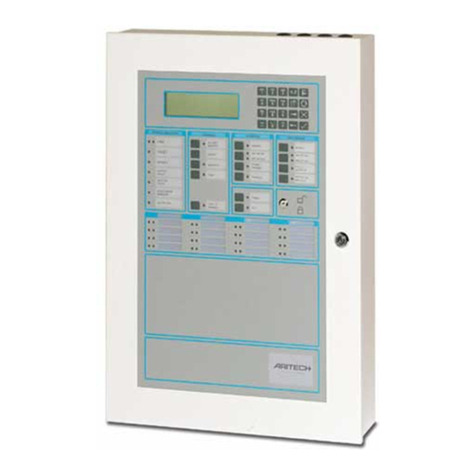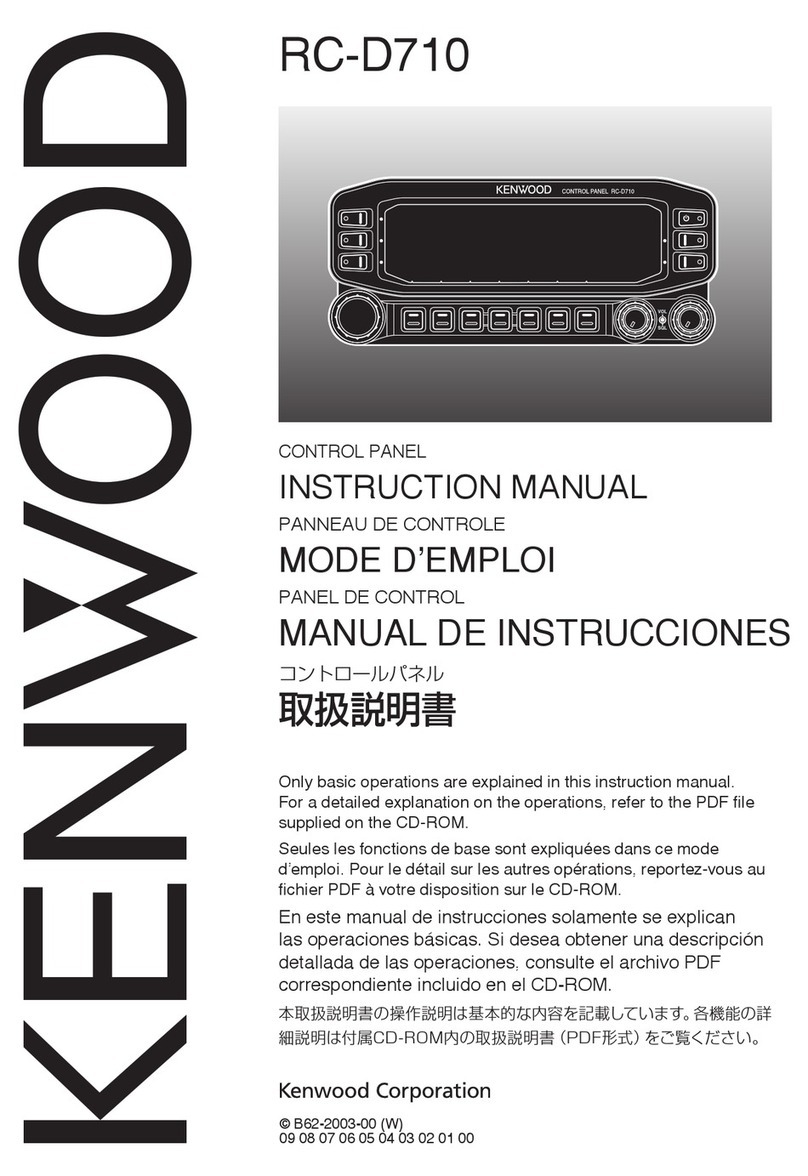MGC RAXN-4000LCD User manual

MGC Network
Fire Control System
- System Normal -
Feb 21, 2018 2:21 PM
SIGNAL
SILENCE
FIRE
DRILL
SYSTEM
RESET
GENERAL
ALARM
ACKNOW-
LEDGE
LAMP
TEST
ENTER
TROUBLE
QUEUE
SUPV.
QUEUE
ALARM
QUEUE
MENU
CANCEL
INFO
MONITOR
QUEUE
A.C.
ON
PRE-
ALARM
GROUND
FAULT
Installation and Wiring Manual
Network Remote Annunciator Panel
LT-895MP Rev. 0
March 2021
RAXN-4000LCD


3
Table of Contents
1.0 Introduction 4
2.0 Installation Instructions 5
3.0 Jumper Settings 6
4.0 DIP Switch Settings 7
5.0 Wiring Instructions 8
6.0 Cable Connections 9
7.0 Specifications 10
8.0 Battery Calculations 11
9.0 Warranty and Warning Information 12

4
1.0 Introduction
MGC’s remote shared display is the RAXN-4000LCD. The RAXN-4000LCD provides a replica
of the main Fire Alarm Panel display at a remote location. It is equipped with a large 4 line x 20
character back-lit alphanumeric LCD display that uses a simple menu system complete with a
directional keypad and switches for Enter, Menu, Cancel and Info. The display expands with
up to a total of 41 frames made up of display adder modules and up to 7 RAXN-4000LCDs per
node, refer to figure below. The RAXN-4000LCD may be mounted in the BB-1000 (MMX-BB-
1000) Series backboxes, the BB-5008, BB-5014, BBX-FXMNS (MMX-BBX-FXMNS) and FX-
LOC (MMX-LOC) enclosures.
IPS-2424DS
Programmable
Input Switches
[2 Frames]
QAZT-5302DS
Zoned Paging and
Telephone Selector
[1 Frame]
QMT-5302N
Master Telephone
[1 Frame]
QMP-5101N
Master Paging
[1 Frame]
QMP-5101NV
Master Paging
[1 Frame]
QMT-5302NV
Master Telephone
[1 Frame]
FDX-008W/KI
Fan Damper
Controller
[1 Frame]
RAX-1048TZDS
Adder
Annunciator
[3 Frames]
AGD-048
Graphic
Driver
[1 Frame]
PTR-2000-1
Line Printer
RAXN-4000LCD
Annunciator
External RS-485
RS-485 from Main Fire Alarm Board
The RAXN-4000LCD can support up to a maximum of 41
frames in any combination of annunciator type modules.
RS-232

5
2.0 Installation Instructions
The RAXN-4000LCD chassis is mounted with four hex nuts. Figure below shows the RAXN-
4000LCD mounted into a BB-1001D/DR/DS (MMX-BB-1001D/DR) backbox. Dimensions for
height and mounting hole locations change for the various backboxes as shown in the table
below.
BACKBOX MODEL
HEIGHT
OF
BACKBOX
H (IN.)
WIDTH OF
BACKBOX
(IN.)
HORIZONTAL
MOUNTING
HOLE DIM.
A (IN.)
VERTICAL
MOUNTIN
HOLE DIM.
B (IN.)
BB-1001D/DR/DS (MMX-BB-1001D/DR) 9.0” 12.75” 9.95” 7.5”
BB-1002D/DR/DS (MMX-BB-1002D/DR) 18.0” 12.75” 9.95” 16.5”
BB-1003D/DR/DS (MMX-BB-1003D/DR) 26.5” 12.75” 9.95” 24.9”
BB-1008D/DR/DS (MMX-BB-1008D/DR) 33.0” 22.5” 9.95” 35.2”
BB-1012D/DR/DS (MMX-BB-1012D/DR) 45.0” 22.5” 9.95” 52.0”
BACKBOX CAN BE MOUNTED
WITH STANDARD 4" X 4"
ELECTRICAL BOXES
BB-1001D/DR/DS BACKBOX IS SHOWN
RAXN-4000LCD ANNUNCIATOR
GB-1001RAXN GUARD BRACKET
B
12.75”
H
A
#6-32
HEXNUTS
1.85”
WALL
DOOR
BACKBOX

6
3.0 Jumper Settings
There are 3 jumpers located on the top left-hand side of the board position left to right as JW2,
JW1 and JW3.
Jumper Function
JW1 Left OPEN, used for hard reset.
JW2 CLOSED (jumper installed) for watchdog timer.
JW3 Left OPEN, if buzzer (located on the right-side of jumper JW3) is to be silenced.
Note: There are jumpers located in connectors P6 and P7. Remove these jumpers
when using adder modules beyond the first 13 frames. Refer to the Fire Alarm
Panel manual for further details.
i
RS-485 TERMINALS 24V POWER
TERMINALS
SW1
L
CD Display
C
ontrast Adjust
P5
P6 P7
up to a total of 13 frames.
P6 is an expansion connector for the next
14 frames and P7 for the next 14 frames
beyond that for a total of 41 frames. RS-232 Port for
Printer Connection
Jumpers:
JW2, JW1, JW3
ALARM
QUEUE
SUPV.
QUEUE
TROUBLE
QUEUE
MONITOR
QUEUE
MGC Network
Fire Alarm Control System
- System Normal -
SIGNAL
SILENCE
GENERAL
ALARM
ACKNOW-
LEDGE
FIRE
DRILL
SYSTEM
RESET
LAMP
TEST
February 21, 2018 10:08 AM
P5 connects to rst set of display modules,

7
4.0 DIP Switch Settings
Each RAXN-4000LCD Shared Display Annunciator needs to be assigned a unique address
via the DIP switches of SW1.
The RAXN-4000LCD SW1 DIP switches are set by selecting the active ON. The addresses
available for the RAXN-4000LCD are 33 to 39, inclusive. Set the address as follows in the
table below:
RAXN-4000LCD Remote Annunciator Address Setting (DIP SWITCH
SW1)
DIP switches are for assigning an address to the RAXN-4000LCD. Binary addresses 33 to 39
are available with the least significant bit being switch SW1-1 on the left and the most
significant bit being SW1-6. The ON setting is active binary. DIP switches SW1-7 and SW1-8
are not used.
For example, address 33 is set by pushing DIP switch SW1-6 and SW1-1 to the ON position
and all the other DIP switches to the OFF position.
Refer to Network Fire Alarm Manual as to whether addresses 37 to 39 are available.
RAXN-4000LCD
Address SW1-1 SW1-2 SW1-3 SW1-4 SW1-5 SW1-6 SW1-7 SW1-8
33 ON OFF OFF OFF OFF ON
Leave in “OFF”
position as
Factory Set.
34 OFF ON OFF OFF OFF ON
35 ON ON OFF OFF OFF ON
36 OFF OFF ON OFF OFF ON
Refer to Network Fire Alarm Manual as to whether addresses 37 to 39 are available
37 ON OFF ON OFF OFF ON
38 OFF ON ON OFF OFF ON
39 ON ON ON OFF OFF ON
SW1
18
ON
OFF
DIP switch SW1 is used to
set the address of the
RAXN-4000LCD

8
5.0 Wiring Instructions
RS-485 Wiring
The RS-485 wiring to the
RAXN-4000LCD Display
Module is recommended to
be twisted shielded pair as
shown in the diagram to the
right. The RS-485 wire
gauge may be:
• 22 AWG up to 2000 ft.
• 20 AWG up to 4000 ft.
The RS-485 wiring from the
fire alarm control panel to
the annunciator(s) must be
point-to-point from the fire
alarm panel to the first
annunciator, then to the next
annunciator, and so on. No
star wiring or T-tapping is
allowed.
Each RAXN-4000LCD
Shared Display has a 120
ohm end-of-line resistor on its RS-485 output terminals. This resistor is removed on all except
the last wired annunciator.
24V DC Wiring
The 24 VDC field wiring needs to be of an appropriate gauge for the number of annunciators
and the total wiring run length. Refer to section 8 on page 11 to calculate the maximum current
for all annunciators summed together.
Attention: Accidentally connecting any of the 24 VDC wires to the RS-485 wiring will result
in damage to the annunciator and/or to the fire alarm control panel to which it is
connected.
Total Maximum
Current for all
Annunciators
Maximum Wiring Run to Last Annunciator Max. Loop
Resistance
18 AWG 16 AWG 14 AWG 12 AWG
Amperes ft mft mft mft mOhms
0.12 1180 360 1850 567 3000 915 4250 1296 15
0.30 470 143 750 229 1200 366 1900 579 6
0.60 235 71 375 114 600 183 850 259 3
0.90 156 47 250 76 400 122 570 174 2
1.20 118 36 185 56 300 91 425 129 1.5
1.50 94 29 150 46 240 73 343 105 1.2
1.70 78 24 125 38 200 61 285 87 1.0
24 VDC
INPUT
-
+
-
+
24 VDC
OUTPUT
24 VDC POWER FROM FIRE ALARM MAIN BOARD
OR PREVIOUS ANNUNCIATOR
24 VDC POWER TO
NEXT ANNUNCIATOR
+
-
S
S
-
+
RS-485
INPUT
RS-485
OUTPUT
RS-485 TO NEXT ANNUNCIATOR
(TWISTED SHIELDED PAIR)
RS-485 FROM FIRE ALARM MAIN BOARD OR PREVIOUS
ANNUNCIATOR (TWISTED SHIELDED PAIR)
RAXN-4000LCD
ALL CIRCUITS ARE POWER LIMITED
AND MUST USE TYPE FPL, FPLR, OR
FPLP POWER LIMITED CABLE
!

9
6.0 Cable Connections
The RAXN-4000LCD may be utilized by itself in a remote location or within a larger enclosure
together with other display modules. It may also be used as part of a mass notification system.
Below is an example of a RAXN-4000LCD and a RAX-1048TZDS 48 LED Annunciator
Display module in a BB-1002D/DR/DS (MMX-BB-1002D/DR) enclosure.
Connections on the
RAXN-4000LCD
Annunciator
P5: Connects to the RAX-
1048TZDS 48 LED Annunciator
module. This connector may
connect up to 13 frames of display
modules.
P6: Connects to next 14 frames (i.e.
frame 15 to 27) of display modules.
P7: Connects to next 14 frames (i.e.
frame 28 to 41) of display modules.
Terminals: Terminal wiring is
required for the RS-485 loop and the
24V DC power source. See section
5 on page 8 for details.
SW1: DIP switch SW1 is used to set
the address for the RAXN-4000LCD.
See section 6 on page 9 for details.
Connections on the RAX-1048TZDS 48 LED Annunciator Display Module:
P1: Connects to the main annunciator chassis RAXN-4000LCD P5.
P2: Connects to the next display module if used.
Note: The last annunciator must have a 120 ohm E.O.L. resistor connected to the RS-485
output terminals.
P2
RAX-1048TZDS Adder Annunciator or
IPS-2424DS Programmable Input Switches Module
POWER
TERMINALS
P1
P5
RAXN-4000LCD SHARED DISPLAY BOARD
RS-485
TERMINALS
SW1
ALARM
QUEUE
SUPV.
QUEUE
TROUBLE
QUEUE
MONITOR
QUEUE
MGC Network
Fire Alarm Control System
System Normal
February 21 2018 2:21PM
SIGNAL
SILENCE
GENERAL
ALARM
ACKNOW-
LEDGE
FIRE
DRILL
SYSTEM
RESET
LAMP
TEST
i

10
7.0 Specifications
Enclosure Models
BB-1001D/DR/DS (MMX-BB-1001D/DR): Backbox for one annunciator chassis with keylock
door.
BB-1002D/DR/DS (MMX-BB-1002D/DR): Backbox for up to two annunciator chassis with
keylock door.
BB-1003D/DR/DS (MMX-BB-1003D/DR): Backbox for up to three annunciator chassis with
keylock door.
BB-1008D/DR/DS (MMX-BB-1008D/DR): Backbox for up to eight annunciator chassis with
keylock door.
BB-1012D/DR/DS (MMX-BB-1012D/DR): Backbox for up to twelve annunciator chassis with
keylock door.
Other larger enclosures available are BB-5008, BB-5014, BBX-FXMNS (MMX-BBX-FXMNS)
and FX-LOC (MMX-LOC).
Annunciator Models
RAXN-4000LCD Remote Network Shared Display LCD Annunciator
• 24V DC nominal.
• Interconnects via one ribbon cable (or wiring) to the Main Network Fire Alarm Panel or to
previous RAXN-4000LCD.
• Provides exact functions as the main display.
• Standby: 139 mA Max., All LEDs ON: 164 mA Max.
RAX-1048TZDS Adder Annunciator Module (48 Display Points)
• Interconnects via one ribbon cable from RAXN-4000LCD or to previous RAX-1048TZDS
or IPS-2424DS to the next RAX-1048TZDS or IPS-2424DS.
• Annunciation of up to 48 additional points.
• Standby: 22 mA Max., All LEDs ON: 262 mA Max.
Note: Finish: Backbox painted black, white painted door (standard), suffix “R” for red
painted door or suffix “S” for stainless steel finish.
Material: 16 G.A cold rolled steel (CRS)
See section 2 on page 5 for enclosure dimensions.
i

11
8.0 Battery Calculations
Current Drain for Battery Calculations
The following are the currents for the RAXN-4000LCD to which is added the number of RAX-
1048TZDS and/or IPS-2424DS or FDX-008W(KI) used:
Normal Standby Current = 139 mA + ___________ x 22 mA + ___________ x 10mA = _______
[number of RAX-1048TZDS] [number of IPS-2424DS]
Maximum Alarm Current = 164 mA + ___________ x 35 mA + ___________ x 15mA = _______
[number of RAX-1048TZDS] [number of IPS-2424DS]
The Normal Standby Current is used for battery size calculations (see the Network Fire
Alarm Manual for battery calculations) and includes the current drain for the Trouble Buzzer,
Trouble LED, and one alarm LED. The Maximum Alarm Current is used to calculate the wire
size required (see section 5 on page 8).

12
9.0 Warranty and Warning Information
WARNING!
Please read this document CAREFULLY, as it contains important warnings, life-safety, and
practical information about all products manufactured by the Mircom Group of Companies,
including Mircom and Secutron branded products, which shall include without limitation all fire
alarm, nurse call, building automation and access control and card access products
(hereinafter individually or collectively, as applicable, referred to as “Mircom System”).
NOTE TO ALL READERS:
1. Nature of Warnings. The within warnings are communicated to the reader out of an
abundance of caution and create no legal obligation for Mircom Group of Companies,
whatsoever. Without limiting the generality of the foregoing, this document shall NOT be
construed as in any way altering the rights and obligations of the parties, governed by the legal
documents that apply in any given circumstance.
2. Application. The warnings contained in this document apply to all Mircom System and shall
be read in conjunction with:
a. the product manual for the specific Mircom System that applies in given circumstances;
b. legal documents that apply to the purchase and sale of a Mircom System, which may
include the company’s standard terms and conditions and warranty statements;
c. other information about the Mircom System or the parties’ rights and obligations as may
be application to a given circumstance.
3. Security and Insurance. Regardless of its capabilities, no Mircom System is a substitute for
property or life insurance. Nor is the system a substitute for property owners, renters, or other
occupants to act prudently to prevent or minimize the harmful effects of an emergency
situation. Building automation systems produced by the Mircom Group of Companies are not
to be used as a fire, alarm, or life-safety system.
NOTE TO INSTALLERS:
All Mircom Systems have been carefully designed to be as effective as possible. However,
there are circumstances where they may not provide protection. Some reasons for system
failure include the following. As the only individual in contact with system users, please bring
each item in this warning to the attention of the users of this Mircom System. Failure to
properly inform system end-users of the circumstances in which the system might fail may
result in over-reliance upon the system. As a result, it is imperative that you properly inform
each customer for whom you install the system of the possible forms of failure:
4. Inadequate Installation. All Mircom Systems must be installed in accordance with all the
applicable codes and standards in order to provide adequate protection. National standards
require an inspection and approval to be conducted by the local authority having jurisdiction
following the initial installation of the system and following any changes to the system. Such
inspections ensure installation has been carried out properly.
5. Inadequate Testing. Most problems that would prevent an alarm a Mircom System from
operating as intended can be discovered by regular testing and maintenance. The complete
system should be tested by the local authority having jurisdiction immediately after a fire,
storm, earthquake, accident, or any kind of construction activity inside or outside the premises.

13
The testing should include all sensing devices, keypads, consoles, alarm indicating devices
and any other operational devices that are part of the system.
NOTE TO USERS:
All Mircom Systems have been carefully designed to be as effective as possible. However,
there are circumstances where they may not provide protection. Some reasons for system
failure include the following. The end user can minimize the occurrence of any of the following
by proper training, testing and maintenance of the Mircom Systems:
6. Inadequate Testing and Maintenance. It is imperative that the systems be periodically
tested and subjected to preventative maintenance. Best practices and local authority having
jurisdiction determine the frequency and type of testing that is required at a minimum. Mircom
System may not function properly, and the occurrence of other system failures identified below
may not be minimized, if the periodic testing and maintenance of Mircom Systems is not
completed with diligence and as required.
7. Improper Operation. It is important that all system users be trained in the correct operation
of the alarm system and that they know how to respond when the system indicates an alarm.
A Mircom System may not function as intended during an emergency situation where the user
is unable to operate a panic or emergency switch by reason of permanent or temporary
physical disability, inability to reach the device in time, unfamiliarity with the correct operation,
or related circumstances.
8. Insufficient Time. There may be circumstances when a Mircom System will operate as
intended, yet the occupants will not be protected from the emergency due to their inability to
respond to the warnings in a timely manner. If the system is monitored, the response may not
occur in time enough to protect the occupants or their belongings.
9. Carelessness or Safety Hazards. Moreover, smoke detectors may not provide timely
warning of fires caused by carelessness or safety hazards such as smoking in bed, violent
explosions, escaping gas, improper storage of flammable materials, overloaded electrical
circuits or children playing with matches or arson.
10. Power Failure. Some Mircom System components require adequate electrical power supply
to operate. Examples include: smoke detectors, beacons, HVAC, and lighting controllers. If a
device operates only by AC power, any interruption, however brief, will render that device
inoperative while it does not have power. Power interruptions of any length are often
accompanied by voltage fluctuations which may damage Mircom Systems or other electronic
equipment. After a power interruption has occurred, immediately conduct a complete system
test to ensure that the system operates as intended.
11. Battery Failure. If the Mircom System or any device connected to the system operates from
batteries it is possible for the batteries to fail. Even if the batteries have not failed, they must be
fully charged, in good condition, and installed correctly. Some Mircom Systems use
replaceable batteries, which have a limited life-span. The expected battery life is variable and
in part dependent on the device environment, usage and type. Ambient conditions such as
high humidity, high or low temperatures, or large temperature fluctuations may reduce the
expected battery life. Moreover, some Mircom Systems do not have a battery monitor that
would alert the user in the event that the battery is nearing its end of life. Regular testing and
replacements are vital for ensuring that the batteries function as expected, whether or not a
device has a low-battery monitor.
12. Physical Obstructions. Motion sensors that are part of a Mircom System must be kept clear
of any obstacles which impede the sensors’ ability to detect movement. Signals being
communicated by a Mircom System may not reach the receiver if an item (such as metal,
water, or concrete) is placed on or near the radio path. Deliberate jamming or other
inadvertent radio signal interference can also negatively affect system operation.

14
13. Wireless Devices Placement Proximity. Moreover all wireless devices must be a minimum
and maximum distance away from large metal objects, such as refrigerators. You are required
to consult the specific Mircom System manual and application guide for any maximum
distances required between devices and suggested placement of wireless devices for optimal
functioning.
14. Failure to Trigger Sensors. Moreover, Mircom Systems may fail to operate as intended if
motion, heat, or smoke sensors are not triggered.
a. Sensors in a fire system may fail to be triggered when the fire is in a chimney, walls, roof,
or on the other side of closed doors. Smoke and heat detectors may not detect smoke
or heat from fires on another level of the residence or building. In this situation the
control panel may not alert occupants of a fire.
b. Sensors in a nurse call system may fail to be triggered when movement is occurring
outside of the motion sensors’ range. For example, if movement is occurring on the other
side of closed doors or on another level of the residence or building the motion detector
may not be triggered. In this situation the central controller may not register an alarm
signal.
15. Interference with Audible Notification Appliances. Audible notification appliances may be
interfered with by other noise sources such as stereos, radios, televisions, air conditioners,
appliances, or passing traffic. Audible notification appliances, however loud, may not be heard
by a hearing-impaired person.
16. Other Impairments. Alarm notification appliances such as sirens, bells, horns, or strobes
may not warn or waken a sleeping occupant if there is an intervening wall or door. It is less
likely that the occupants will be alerted or awakened when notification appliances are located
on a different level of the residence or premise.
17. Software Malfunction. Most Mircom Systems contain software. No warranties are provided
as to the software components of any products or stand-alone software products within a
Mircom System. For a full statement of the warranties and exclusions and limitations of
liability please refer to the company’s standard Terms and Conditions and Warranties.
18. Telephone Lines Malfunction. Telephone service can cause system failure where telephone
lines are relied upon by a Mircom System. Alarms and information coming from a Mircom
System may not be transmitted if a phone line is out of service or busy for a certain period of
time. Alarms and information may not be transmitted where telephone lines have been
compromised by criminal tampering, local construction, storms or earthquakes.
19. Component Failure. Although every effort has been made to make this Mircom System as
reliable as possible, the system may fail to function as intended due to the failure of a
component.
20. Integrated Products. Mircom System might not function as intended if it is connected to a
non-Mircom product or to a Mircom product that is deemed non-compatible with a particular
Mircom System. A list of compatible products can be requested and obtained.
Warranty
Purchase of all Mircom products is governed by:
https://www.mircom.com/product-warranty
https://www.mircom.com/purchase-terms-and-conditions
https://www.mircom.com/software-license-terms-and-conditions

15

U.S.A
4575 Witmer Industrial Estates
Niagara Falls, NY 14305
Tel: (905) 660-4655
(888) 660-4655
Fax: (905) 660-4113
© Mircom 2021
Printed in Canada
Subject to change without prior notice
www.mircom.com
CANADA - Main Office
25 Interchange Way
Vaughan, ON L4K 5W3
Tel: (905) 660-4655
(888) 660-4655
Fax: (905) 660-4113
Table of contents
